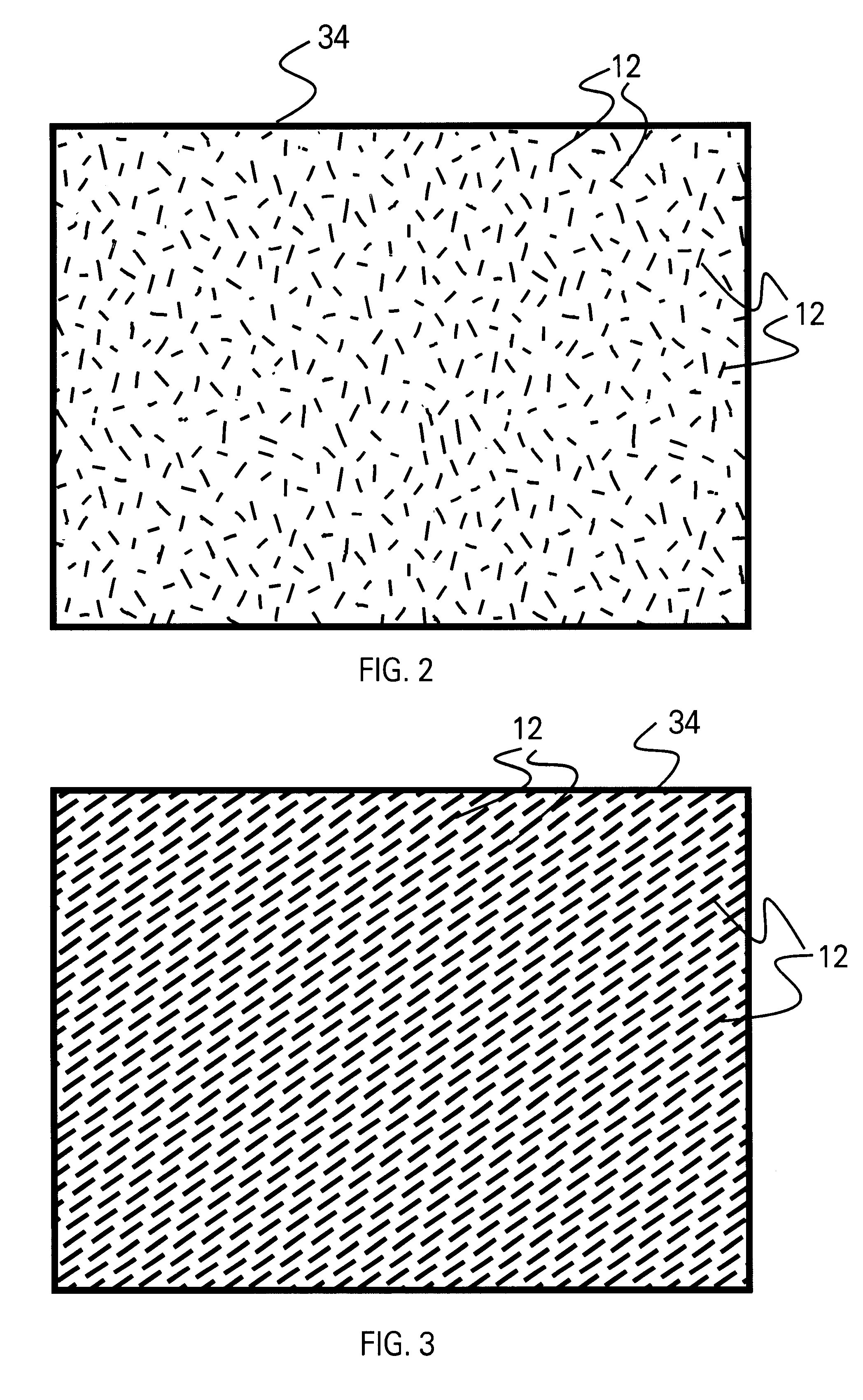Method of aligning nanowires
a nanowire and nanowire technology, applied in nanoinformatics, instruments, nanostructure manufacturing, etc., can solve the problems of limiting the progress of lithographically defined patterning, degrading devices, and need for increasingly finer wires
- Summary
- Abstract
- Description
- Claims
- Application Information
AI Technical Summary
Problems solved by technology
Method used
Image
Examples
example
1. Nucleation of Silicon Nanowires on Titanium Islands on Silicon Substrates
Ti-containing islands were formed by chemical vapor deposition (CVD) on 150-mm diameter, Si(001) and Si(111) substrates in a commercially available, lamp-heated, single-wafer reactor using TiCl.sub.4 in argon as the precursor for the Ti and a H.sub.2 ambient. The partial pressure of TiCl.sub.4 was 0.06 pa (4.5.times.10.sup.-4 Torr), and the total reactor pressure was 670 pa (5 Torr). Although the Ti deposition process is selective, unpatterned wafers were used in this demonstration. In most cases, only TiCl.sub.4 was introduced from the gas phase, with the Si being supplied from the Si substrate. In a few cases, a Si-containing gas (SiH.sub.4 or SiH.sub.2 Cl.sub.2) was added during the deposition of the Ti to minimize consumption of the Si substrate during TiSi.sub.2 formation. At the low deposition temperatures of 640.degree. to 670.degree. C. used, the islands are likely to be Ti-rich compared to TiSi.sub....
PUM
| Property | Measurement | Unit |
|---|---|---|
| ion energy | aaaaa | aaaaa |
| time | aaaaa | aaaaa |
| time | aaaaa | aaaaa |
Abstract
Description
Claims
Application Information
 Login to View More
Login to View More - R&D
- Intellectual Property
- Life Sciences
- Materials
- Tech Scout
- Unparalleled Data Quality
- Higher Quality Content
- 60% Fewer Hallucinations
Browse by: Latest US Patents, China's latest patents, Technical Efficacy Thesaurus, Application Domain, Technology Topic, Popular Technical Reports.
© 2025 PatSnap. All rights reserved.Legal|Privacy policy|Modern Slavery Act Transparency Statement|Sitemap|About US| Contact US: help@patsnap.com


